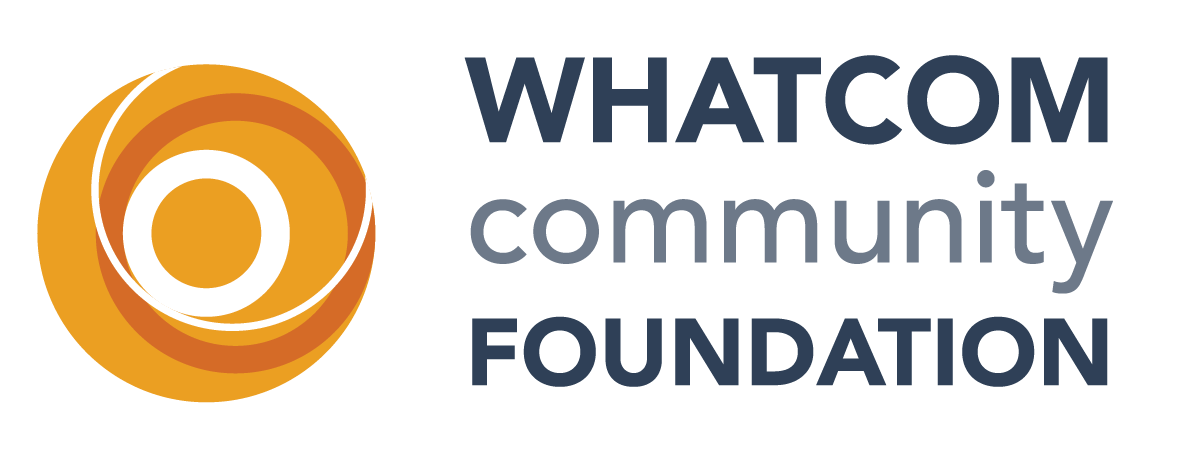
2024 THRIVE | The Fentanyl Crisis: Where do we go from here?
Hi Friends,
Ten years ago, I’d guess that few people reading this newsletter would have known what Narcan is. Today, many know it’s a drug that can reverse an opioid overdose. Parents of teens have been urged to keep it on hand — advice as terrifying as it is practical.
People — family, friends, neighbors, children — are dying in our midst at alarming rates. Anyone who cares about community cannot write off opioid addiction as someone else’s sad problem; it belongs to all of us. The suffering begins with individuals and their families and ripples out to our healthcare and justice systems, our economy, our social fabric. Or is it the other way around?

Mauri Ingram,
President & CEO
COMMUNITY CHALLENGE
Opioid Addiction
As part of the Whatcom County Health Advisory Board’s effort to mobilize resources amid the fentanyl crisis earlier this spring, District Court Judge Angela Anderson reported that she was dismissing at least one drug case a week because the person on trial had died of an overdose. You read that right.
Opioid addiction emerged as the foremost health concern nationwide prior to the COVID-19 outbreak, a concern amplified within the Lummi Nation. The age-adjusted mortality rate due to opioid overdoses among the Lummi People surpasses that of Washington State by over 3.5 times.
More ugly facts:
- In 2022, the Whatcom Gang and Drug Task Force seized roughly 25 times the amount of fentanyl seized in 2020 (more than half a million pills)
- Between 2022 and 2023, drug overdose deaths in Whatcom County rose by 43%; most involved opioids and most of those implicate street fentanyl.
- During the same period, Washington state had the largest percentage increase of drug overdose deaths in the nation.
Then last month came the sad news of our county’s first confirmed death attributed to xylazine. This powerful veterinary drug, known as “tranq,” is often mixed with other street drugs such as meth and fentanyl — the latter up to 100 times more potent than morphine — and it doesn’t respond to Narcan.
Government is responding. Congressman Rick Larsen issued a report in January that makes several policy recommendations at the federal level. Locally, similar to moves made by Lummi Nation leaders and Bellingham Mayor Kim Lund, County Executive Satpal Sidhu recently activated a multifaceted plan proposed by county council members to confront the fentanyl emergency.
At the same time, the nonprofit sector has rallied in an extraordinary call to action with All Hands Whatcom, which involves more than 30 organizations in a dedicated effort to raise awareness about the opioid epidemic, its causes — which include over-prescribed pain medication, ACES* and cheap, illicit opioids flooding our streets in recent years — and identify and implement strategies for ending it.
This means fortifying both treatment and recovery options while also grappling with root causes — on both the supply and the demand sides. Like any disaster, this is an urgent situation that demands both immediate intervention and long-term solutions aimed at prevention. While it can feel overwhelming, as a community, there are things we can do.
*ACES (Adverse Childhood Experiences) is a clinical term for the heartbreaking reality of the difficult, often traumatic, circumstances and/or events that some children experience, including violence and neglect, mental health challenges, substance use, discrimination, poverty, death or incarceration of a loved one. These experiences are linked to chronic physical and mental health problems as well as substance abuse in adolescence and adulthood, can limit education and job opportunities and can be passed to their own children.
WHAT WE’RE DOING
Everything the Community Foundation does – from Project Neighborly to the Millworks project – is about vision: Everyone who lives here thrives. The work most directly linked to resilience building, opioid prevention and response includes:
- Participating in the Multi-Agency Coordination (MAC) Group, a coalition of government agencies, community-based organizations, healthcare providers, and others from across Whatcom County.
- Providing financial support to and participating in All Hands Whatcom.
- Making youth mental health grants through the Youth Philanthropy Project; $55,000 in 2024.
- Launched phase 1 of Child Savings Accounts (CSAs) establishing $1,000 accounts for every child living in Mercy Housing properties in Whatcom County. CSAs lead to positive outcomes for children and parents that include higher rates of post-secondary education and improved health and wellbeing.
- Hosted a Youth Mental Health Spotlight Briefing in November, 2021, to share local trends as they were unfolding.
WHAT WE’RE DOING
Below is a non-exhaustive list of organizations and efforts doing work in one or more areas related to building resilience, healthy habits, prevention, intervention, crisis support, and recovery.
Our goal is to share relevant resources, upstream and down:
Learn more and share with the young people in your life about opioids and efforts to address the crisis:
- Whatcom Overdose Prevention
- Whatcom Has Hope
- All Hands Whatcom
- Adverse Childhood Experiences (CDC)
- Congressman Larsen’s Opioid Report and Policy Recommendations
Give to local efforts helping to build skills and emotional resilience:
- Brigid Collins Parenting Academy
- Roots of Empathy
- Lhaq’temish Foundation
- Whatcom Family & Community Network
Give to local efforts that encourage young people to explore and enjoy healthy passions and pastimes:
- Wild Whatcom
- Vamos Outdoors Project
- Community Boating Center
- Whatcom Family YMCA
- BAAY (Bellingham Arts Academy for Youth)
Give to local organizations supporting crisis-intervention and recovery:
- Domestic Violence and Sexual Assault Services (DVSAS)
- Brigid Collins Family Support Center
- Unity Care NW
- Northwest Youth Services
- Skookum Kids
- Ferndale Community Services
- Catholic Community Services
- Compass Health
- Lifeline Connections
- Support Officer Community Care
- SeaMar Community Health Centers
Give to the Child Savings Account Project, seeding hope for children and families in Whatcom County.
DEEPER DIVE:
- AP News: Tribes in Washington are battling a devastating opioid crisis.
- Stanford University, Design in Action: Lummi Tribal Clinic treatment innovation
- City of Bellingham: Mayor directs additional actions to address fentanyl crisis
- Bellingham Herald: City of Bellingham moves against owner of land that is site of homeless encampment 2/16/24
- Cascadia Daily: Worried homeless campers behind Bellingham Walmart face cloudy future after city action 2/20/24
- Cascadia Daily: ‘There’s a chance to take back your life’: Mental Health Court provides alternative to jail 2/17/24
- Bellingham Herald: Man arrested in Bellingham after toddler overdoses on Fentanyl, police say 2/27/2024
- New York Times: The Addiction Recovery Story We Don’t Hear Enough 2/14/2024
- New York Times: Are We Talking Too Much About Mental Health? 05/06/2024
View the THRIVE Newsletter as e-mailed on 05/21/2024 HERE





No Comments